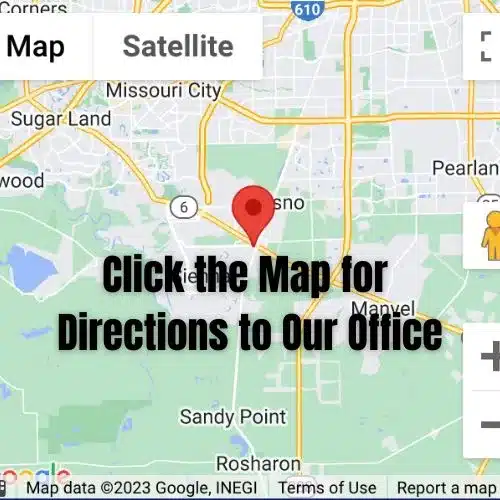Summary of the Podcast – Essential August Lawn Care in Houston
August Lawn Care in Houston: Battling Heat, Pests, and Fungus
Surviving Another Houston Summer
As we near the end of August, Houston lawns have endured months of heat, humidity, and scattered rain showers. Some areas have enjoyed regular rainfall, while others just a few miles away remain dry. Adjusting irrigation to match these conditions is key—turn it off when you’ve had a good rain, and supplement when the weather stays dry.
Common Lawn Problems in Late Summer
Fungal Diseases
Hot and humid weather creates the perfect environment for lawn diseases:
- Gray Leaf Spot – A frequent summer problem on St. Augustine grass.
- Summer Patch – Related to brown patch, but less circular in appearance.
- Brown Patch (coming soon) – Appears with cooler nights in September and October.
💡 Solution: Reduce irrigation in shady, damp areas and consider a fungicide application. Heritage G remains the most effective option for preventing and treating gray leaf spot, summer patch, and brown patch.
Insect Pests
Several pests thrive in drought-stressed or weak lawns during late summer:
- Chinch Bugs – Target dry, stressed St. Augustine lawns. Look for yellowing spots and confirm by spotting small insects with a white “X” on their folded wings.
- Grubs – Cause spongy turf where roots have been eaten. Damaged grass lifts like a carpet.
- Sod Webworms – Moths flying up from the lawn at dawn are a warning sign. Larvae chew jagged patches in healthy grass.
💡 Solution: Use a liquid insecticide like Cyonara for chinch bugs and sod webworms. Treat every 4–5 days to break life cycles. For grub damage, replacement sod may be necessary.
Watering and Mowing in August
Watering New Sod
- Day 1: Apply about 2 inches of water (8–10 hours with a sprinkler).
- First 2 Weeks: Water daily with about 1 inch per day.
- After 3 Weeks: Reduce frequency once sod resists lifting—this means it’s rooted.
Watering Established Lawns
- Apply 1 inch of water per week from rain or irrigation.
- Split into two half-inch applications for better absorption.
- Use rain gauges to measure water accurately.
Mowing Tips
- Mowing Height: Keep grass at 4 inches or higher in summer to reduce stress and conserve moisture.
- Blade Sharpness: Dull mower blades leave jagged tips, increasing disease risk.
- Frequency: Mow weekly. Cutting more than one-third of the blade stresses the lawn.
- Post-Mow Watering: Irrigate the day after mowing during hot, dry weather.
Preparing for Fall Lawn Care
September brings new challenges. Plan ahead for:
- Brown Patch Prevention: Apply Heritage G in mid to late September, and again three weeks later, especially in areas that develop brown patch every year.
- Fall Fertilizer: Apply Nitro-Phos Fall Special fertilizer in late September to strengthen grass for cooler weather.
Houston Grass: Quality Sod Year-Round
At Houston Grass, we grow and sell premium varieties of St. Augustine, Zoysia, and Bermuda grasses, all suited for the Houston climate. All grown on our family farm in Bay City. We sell grass 12 months a year—even in winter—and we’re always here to answer your lawn care questions.
📞 Call us today at 281-431-7441 for advice, sod delivery, or installation. We’re open Monday through Thursday 8–5, and Friday until 2 p.m.
Frequently Asked Questions (FAQs) – Essential August Lawn Care in Houston
Q: How can I tell if my lawn is suffering from grubs or chinch bugs?
A: Grub damage makes the grass feel spongy and allows you to lift it like a rug, as grubs eat the roots. Chinch bugs target drought-stressed grass and can be identified by their white-tipped wings forming an “X” on their backs. Use soapy water in a can to float chinch bugs to the surface for confirmation.
Q: What are the biggest lawn care challenges in Houston during August?
A: The main challenges are extreme heat, high humidity, and sporadic rainfall, which can lead to issues like fungus (gray leaf spot, summer patch), chinch bugs, grubs, and sod webworms.
Q: What is the best way to treat fungus in my lawn?
A: Apply a fungicide like Heritage G, which is effective against gray leaf spot, summer patch, and brown patch. Use preventatively or at the first sign of disease. One 30-pound bag treats up to 15,000 square feet preventatively or 7,500 square feet curatively.
Q: How should I water new grass versus established grass in the summer?
A: New grass needs to be “flooded” with two inches of water on the first day, then watered daily for two weeks. Established grass should receive one inch of water per week, either from rainfall or irrigation, ideally split into two half-inch waterings.
Q: What mowing practices help keep my lawn healthy in the Houston summer?
A: Keep mower blades sharp to avoid jagged cuts that invite disease. Raise mowing height to at least four inches during summer, and mow at least once a week to avoid stressing the grass.
Q: How do I control chinch bugs and sod webworms?
A: For chinch bugs, use a liquid insecticide like Cyonara, applied with a hose. Repeat treatment after 4–5 days to break the lifecycle. For sod webworms, look for brown moths and ragged grass, and treat with the same insecticide, repeating as needed.
Q: Can I plant grass in Houston year-round?
A: Yes, Houston Grass sells and installs grass 12 months a year. Even though grass may go dormant and brown in winter, it can still be planted successfully.
Q: When should I apply fall fertilizer and brown patch prevention?
A: Apply Fall Special fertilizer (brown Nitro-Phos bag) and a preventative treatment of Heritage G in mid to late September, especially in areas prone to brown patch.
Q: Where can I get more advice or purchase grass and lawn care products?
A: Contact Houston Grass anytime at 281-431-7441 for expert advice or to purchase grass and products. We are open Monday–Thursday 8am–5pm, and Fridays until 2pm (or until sold out) during the summer.


